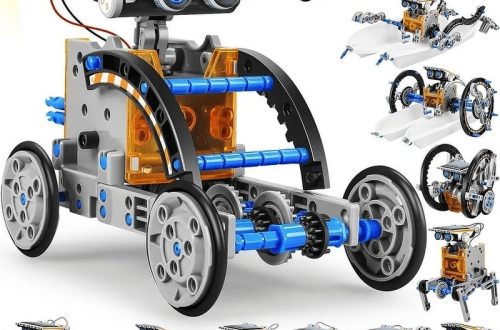The world of RC car racing is a thrilling blend of speed, precision, and strategic maneuvering. But mastering the track goes beyond just a powerful engine. It’s about understanding your car, the terrain, and how to navigate the challenges they present. This guide equips you with the knowledge to dominate any RC car course, transforming you from a novice driver to a track maestro.
Part 1: Knowing Your Machine

Car Selection:
Selecting the appropriate RC car is pivotal for success in racing. For on-road tracks, lightweight and agile vehicles with low ground clearance are ideal, offering optimal grip on smooth surfaces. These cars are engineered to deliver superior handling and performance on asphalt or concrete tracks. Conversely, off-road tracks necessitate sturdier cars with higher ground clearance and robust, knobby tires designed to navigate through bumps, jumps, and loose terrain. Researching the various types of RC cars available is essential to find the model best suited to the specific track and racing conditions. Understanding the intricacies and requirements of different RC car types ensures that enthusiasts can make an informed decision, selecting a vehicle that aligns with the demands of the track they are aiming to conquer. By carefully considering these factors, individuals can equip themselves with a car that maximizes their potential for success in RC car racing, thereby enhancing their overall experience and competitiveness in the sport.
Fine-Tuning Your Ride:
Achieving peak performance in RC car racing relies on a well-tuned and responsive vehicle. It’s crucial to have a comprehensive understanding of your car’s suspension system and how to optimize it. Adjusting the shock absorbers’ stiffness can strike a balance between stability and agility, crucial for maneuvering around the track’s layout. Understanding and fine-tuning the suspension setup can significantly enhance the car’s handling capabilities, ultimately improving overall performance. Moreover, gear ratio adjustments are vital considerations for maximizing the car’s performance. Lower gearing offers better acceleration, making it favorable for tight tracks with numerous turns where quick power delivery is crucial. On the other hand, higher gearing focuses on achieving top speed, making it advantageous for straightaways. A thorough understanding of these tuning concepts enables enthusiasts to tailor their RC cars to specific track conditions, optimizing their performance and competitiveness in RC car racing.

Part 2: The Art of the Track
Line Reading:
Every track has its own story to tell. The key is to learn its language. A racing line is the most efficient path around the track, minimizing distance and maximizing speed. Observe experienced drivers or watch race footage to understand the ideal line for each corner. Analyze the track’s layout: are there sharp turns or sweeping curves? Are there jumps or obstacles to navigate? By understanding the “language” of the track, you can develop your racing line for optimal performance.
Mastering the Maneuvers:
Once you’ve identified the racing line, it’s time to hone your skills in executing it. Smooth throttle control is paramount. Jerky movements upset the car’s balance, leading to traction loss and wasted energy. Practice applying throttle progressively, especially when accelerating out of corners. Braking is equally important. Learn the art of trail braking, where you apply light brake pressure while turning to smoothly transition your car into the corner and maintain control.
Part 3: Conquering the Elements

Taming the Turns:
Mastering cornering is essential for success in RC car racing. A critical aspect of navigating turns effectively is to identify and target the “apex,” the innermost point on the racing line that enables the maintenance of maximum speed while exiting the turn. Implementing effective strategies to approach and navigate corners can significantly impact overall race performance. Enthusiasts should practice entering corners at controlled speeds, aiming to gradually apply throttle as they reach the apex, enabling a powerful exit from the turn. Embracing the principle that “slow is smooth, and smooth is fast” is pivotal, emphasizing the importance of maintaining fluid and controlled movements to maximize speed and efficiency. Focused practice and precision in executing cornering techniques empower RC car enthusiasts to gain a competitive edge, allowing them to navigate corners with precision and confidence, ultimately influencing race outcomes. By prioritizing and refining cornering skills, individuals can optimize their racing performance and bolster their overall competitiveness in the sport.
Flying High: Jumps and Hills:
Jumps and hills add an exciting dimension to off-road tracks. However, they can also be unforgiving. When approaching a jump, maintain a steady speed and hit the jump squarely. Don’t overcorrect your steering mid-air, as this can cause the car to flip. Landing is crucial. Aim for the flattest part of the landing ramp and be prepared to absorb the impact with slightly compressed suspension. On hills, maintain momentum by keeping a smooth throttle control. Avoid sharp turns or sudden braking, which can cause the car to roll over.

Part 4: Practice Makes Perfect
The Value of Repetition:
Becoming proficient in RC car racing requires a commitment to dedicated and consistent practice. Whether on a dedicated track or in a cleared space, investing time in familiarizing yourself with your car’s handling and the intricacies of the track is essential. Engaging in focused practice enables enthusiasts to refine various aspects of their driving technique. This includes experimenting with different racing lines, honing cornering techniques, and perfecting approaches to handling jumps. The process of deeply immersing oneself in practice sessions facilitates the development of a profound understanding of the vehicle and the track, leading to increased confidence and precision in driving. As enthusiasts become more comfortable with their car and the course, they can refine their skills, ultimately boosting their racing performance and competitiveness. Embracing dedicated practice and ongoing refinement of driving skills empowers individuals to excel in RC car racing, culminating in an enriched and rewarding racing experience.
Learning From Your Mistakes:

Everyone makes mistakes, and RC car racing is no exception. Don’t get discouraged by crashes or missed turns. Instead, analyze your mistakes and use them as learning opportunities. Were you entering the corner too fast? Did you apply too much throttle on the jump? By understanding the cause of your errors, you can adjust your approach and improve your driving skills.
Remember, RC car racing is a journey, not a destination. With dedication, practice, and a thirst for knowledge, you can conquer any challenging terrain and transform yourself into a true RC car track master. So, grab your controller, unleash your inner driver, and get ready to dominate the track!


